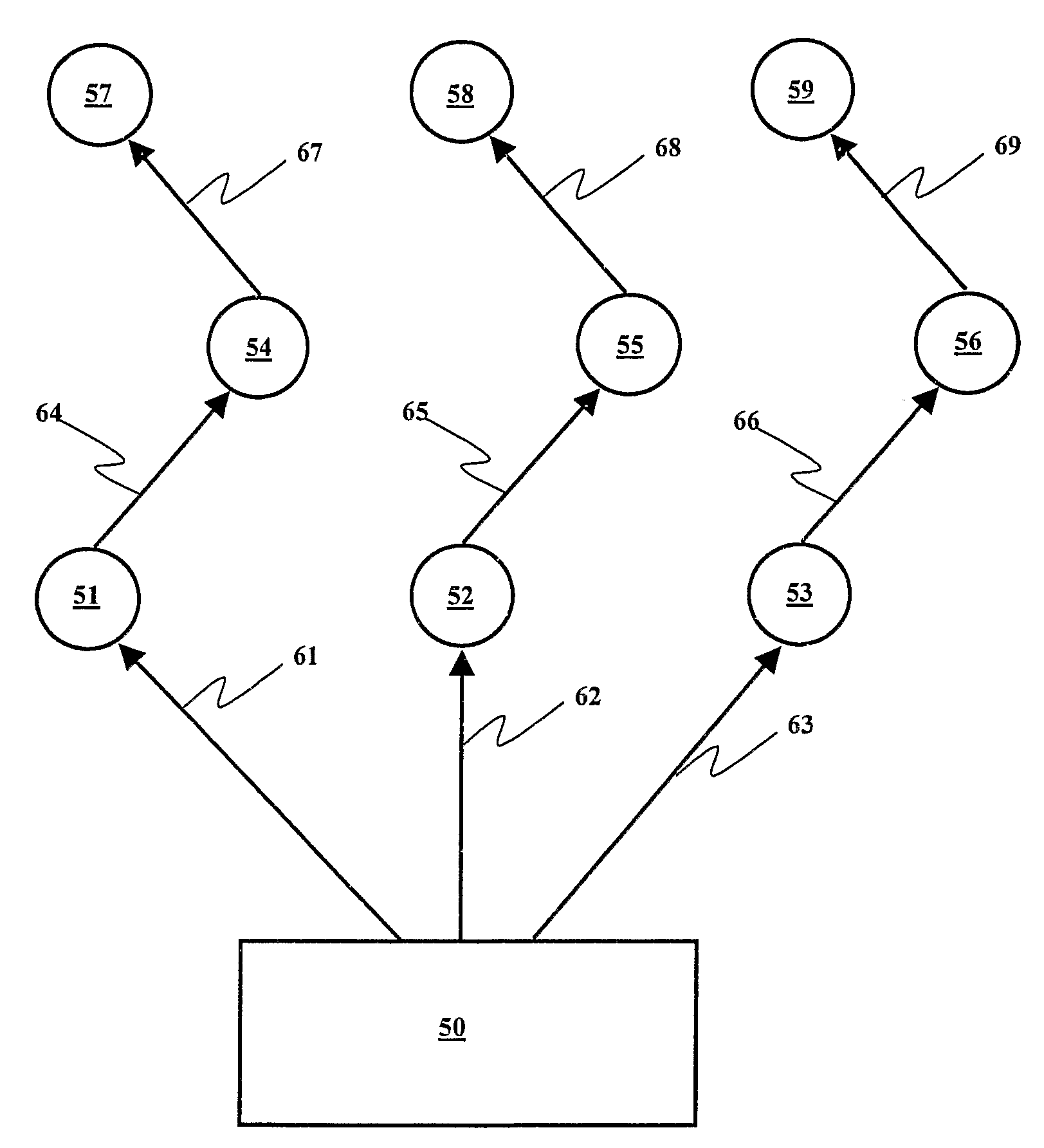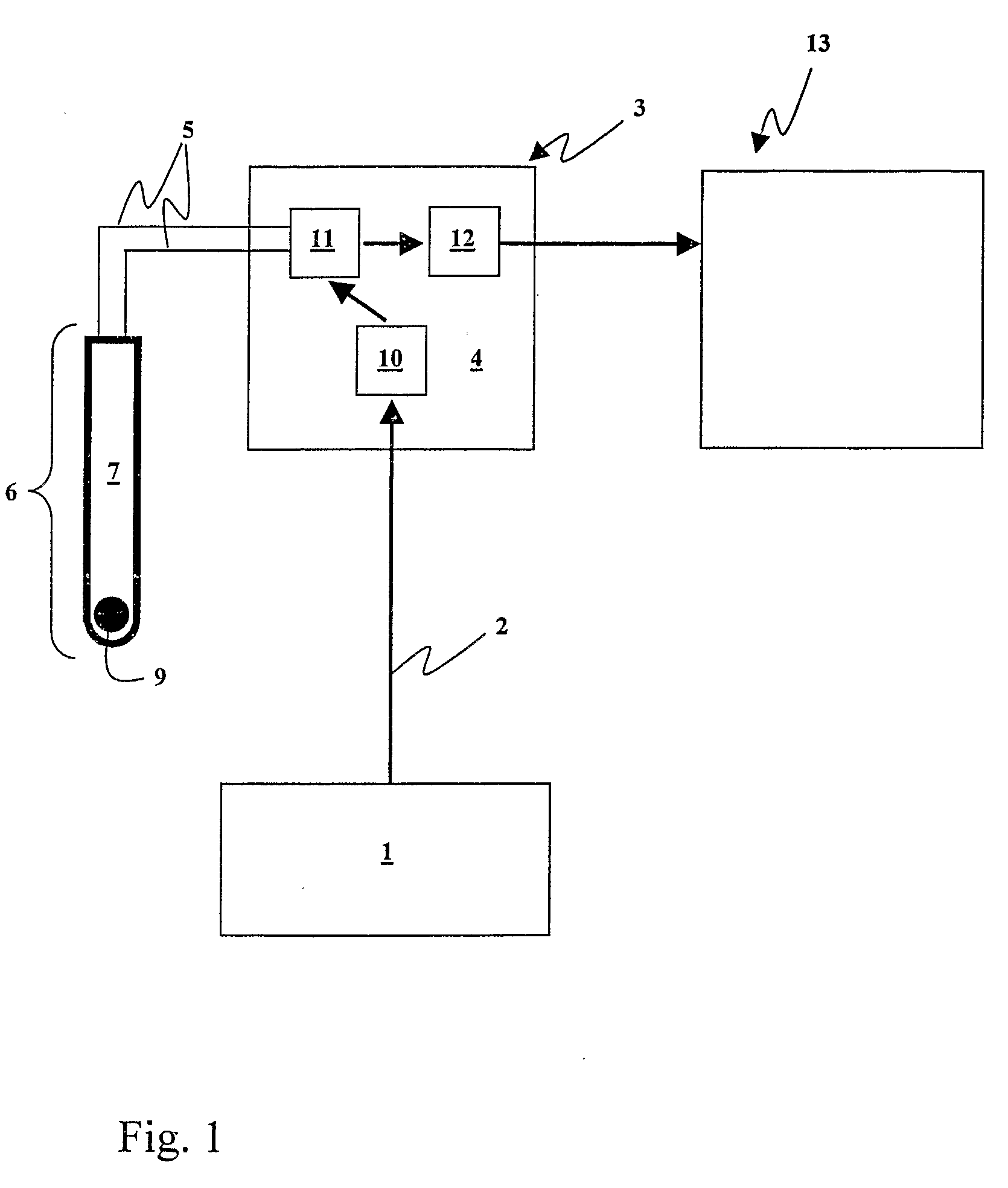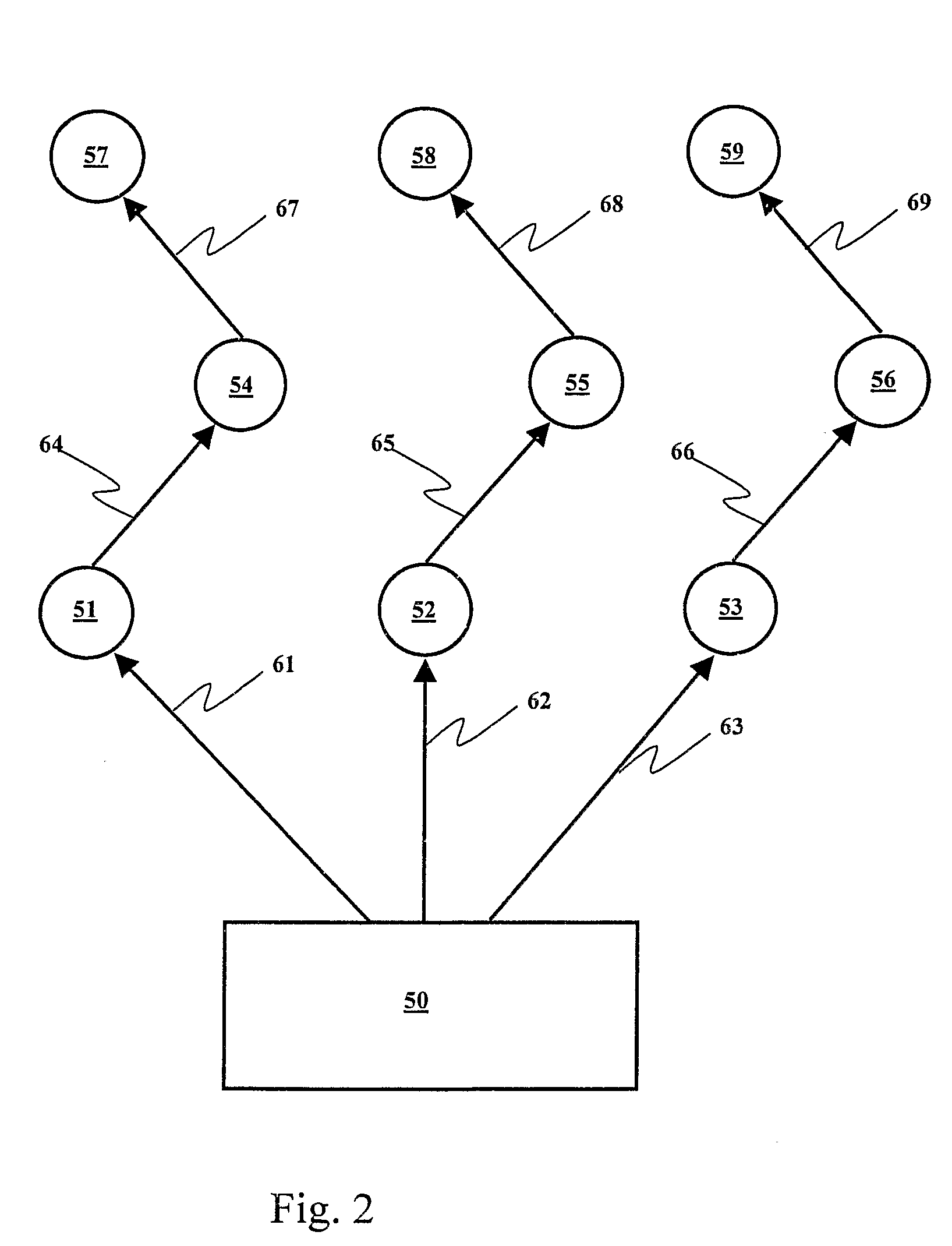Wireless Detonator Assemblies, and Corresponding Networks
- Summary
- Abstract
- Description
- Claims
- Application Information
AI Technical Summary
Benefits of technology
Problems solved by technology
Method used
Image
Examples
example 1
Discussion of Preferred Logging Device / Top-Box Configurations
[0084]In selected embodiments, the blasting apparatus of the present invention may include a logging device for individually programming each wireless detonator assembly. For example, a logging device may instruct the top-box of each wireless detonator assembly, to ascertain the EDD's identity or serial number and in doing so, verify that the communications between top-box and EDD are functioning. The logger may then record information such as the top-box identity number and some location information optionally required for the blasting application.
[0085]For logging, the logging device preferably communicates with the top-box in a manner such that there is virtually no possibility that another top-box and associated detonator in the system “overhears” the communication and improperly processes or transmits data to or from the logging device. For example, a logging device may only communicate with a top-box if within very c...
example 2
Compensation for Signal Transmission Delays at Intermediary Nodes of a Network of Wireless Detonator Assemblies
[0102]In an “self organizing” network of the present invention, the time for a message to get from master (e.g. a blasting machine) to slave (e.g. one or more wireless detonator assemblies) will vary between nodes of the network (i.e. wireless detonator assemblies acting to relay wireless signals to other nodes in the network). Preferred features of the self-organizing network of the present invention allow for compensation of these variable times. To allow for the time variation for critical messages, the inventors propose the following scheme. Any message that requires synchronism is sent out with a sufficiently large advance time offset, X, so that it says “In time X from now, start the action!”. Any device relaying that message may then deduct its own message processing and sending time from X so that eventually when all nodes on the network have received it they all ac...
example 3
Network Communications and Relay Delay Compensation
[0104]A number of radio frequency (RF) receiver / transmitter (TX / RX) devices, with attached microprocessors (computers) can organize themselves into communication networks which provide reliability by using multiple paths and achieve network repair, when one of them is damaged, removed or added, by making adjustments to the message passing rules.
[0105]The operation of such networks generally employs collision avoidance means in which the RF TX / RX device first listens on the assigned frequency to see if any other device is transmitting and if the channel is clear, starts its own transmission. If not clear then it may wait for a (random) time before trying again. This naturally introduces unpredictable delays in the system, especially if any device on the network may decide at any time to send its own message to another (in peer to peer communications), thus temporarily blocking others. This problem is likely to be less severe in a mas...
PUM
 Login to View More
Login to View More Abstract
Description
Claims
Application Information
 Login to View More
Login to View More - R&D
- Intellectual Property
- Life Sciences
- Materials
- Tech Scout
- Unparalleled Data Quality
- Higher Quality Content
- 60% Fewer Hallucinations
Browse by: Latest US Patents, China's latest patents, Technical Efficacy Thesaurus, Application Domain, Technology Topic, Popular Technical Reports.
© 2025 PatSnap. All rights reserved.Legal|Privacy policy|Modern Slavery Act Transparency Statement|Sitemap|About US| Contact US: help@patsnap.com



